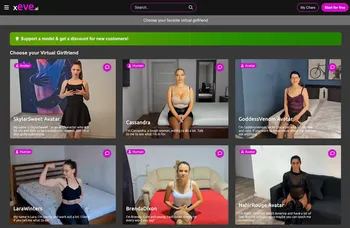The AI Girlfriend Boom: A $2.8 Billion Market (U.S. vs. Global)
Some links are affiliate links. If you shop through them, I earn coffee money—your price stays the same.
Opinions are still 100% mine.

When I first started digging into the world of AI companions, I’ll admit I was skeptical. The thought of having a bot for a romantic companion seemed like something out of a science fiction work. But when I took a close look at the numbers, the numbers told a startling story. This is not a niche hobby anymore; we are on the brink of a multi-billion dollar global industry predicated on a primal human need—connection.
The market for AI-powered romantic companionship is witnessing explosive growth. Google searches for “AI Girlfriend” saw a staggering 525% increase in just one year, signaling a massive wave of public curiosity. This isn't just a passing fad; it's a rapidly maturing industry. The global market for AI girlfriends was valued at around $2.8 Billion in 2023 and is projected to skyrocket to over $11 Billion by 2032, driven by a compound annual growth rate (CAGR) of nearly 27.4%.
Today, I want to take you on a journey through this fascinating landscape. We'll dissect the AI romance industry, compare the U.S. market with global trends, and explore the very human drivers behind this technological revolution.
Estimating the Size of the AI Romance Market: A Tale of Two Markets
When you look through the wide lens of the international AI companion market, two major narratives emerge: an established leader and a rapidly rising star.
Currently, the United States holds the crown as the largest single market for AI girlfriend applications. This dominant position is fueled by its advanced telecommunications infrastructure, high smartphone penetration, and a culture increasingly open to AI solutions for everyday challenges. The U.S. AI girlfriend market was estimated at $0.73 billion in 2024. Forecasts predict this will more than quadruple to $2.98 billion by 2032, reflecting a steady annual growth of 22.19%. North America currently commands over 40% of the entire AI girlfriend app market share.
While North America is a powerhouse, the most dramatic growth is happening in the Asia-Pacific (APAC) region. The AI companion market for APAC is the fastest-growing in the world. This surge is driven by a massive, tech-savvy youth population, soaring mobile phone ownership, and government initiatives that encourage AI development. The market here is projected to expand at a whopping CAGR of 28.78% through 2031.
Here’s a brief look at the key AI relationship bot stats:
| Region | Market Value (Approx.) | Projected Market Value | CAGR |
|---|---|---|---|
| Global | $2.8 Billion (2023) | $11.06 Billion by 2032 | ~27.4% (2025-2032) |
| United States | $0.73 Billion (2024 Est.) | $2.98 Billion by 2032 | 22.19% (2025-2032) |
| Asia-Pacific | N/A | Fastest Growing Region | ~28.78% (2024-2031) |
What Exactly *Is* An AI Companion?
Before going any further, let’s clarify what we're discussing. An AI girlfriend is a sophisticated application that uses artificial intelligence, machine learning, and natural language processing to simulate human-like conversation and companionship. Think of it as an incredibly advanced chatbot. Powered by modern Large Language Models (LLMs), these are not the simple, repetitive bots of the past. They can remember conversations, adapt to your personality, and create a genuinely personalized experience.

Interestingly, the concept has roots stretching back over half a century to ELIZA, a 1960s program that mimicked a therapist. Today’s platforms have leaped light-years ahead. For instance, Nomi.ai focuses on creating emotionally attuned AIs with deep memory capabilities, even allowing groups of AIs to interact. Meanwhile, Candy.ai emphasizes deep customization through roleplay, romance, and immersive features like AI-generated images and voice messages. Other notable platforms in this space include SecretDesires, Kupid.ai, and Sweetdream.ai, each offering unique features.
What’s Causing the Boom? The Human Drivers Behind AI Companionship

So, what’s fueling this incredible demand? My research suggests these apps are filling a genuine need in the AI emotional support market. They offer a unique combination of features that resonate deeply in our modern world.
- A Cure for Loneliness: The simple, profound need for companionship is a primary motivator. For those feeling isolated, an AI offers a consistently available and supportive presence.
- A Non-Judgmental Zone: Users can express themselves freely without fear of stigma or prejudice. This can be incredibly liberating for individuals who struggle with shyness or social anxiety.
- Social Skills Sandbox: Interacting with an AI provides a low-pressure environment to practice conversation and build confidence for real-world relationships.
- Personalized Support: These AIs can offer encouragement and stress relief. In fact, some user surveys report that a whopping 82% of users experienced improved emotional well-being.
- Entertainment and Exploration: For many, it's a form of entertainment—a digital playground for exploring creativity, fantasy, and relationships.
The Regional Drivers of Demand: A Closer Look
The motivations for using these apps are nuanced and vary by region, painting a vivid picture of the global trends in virtual girlfriends.
In the United States:
- Technological Sophistication: The ubiquity of smartphones and high-speed internet makes these platforms easily accessible.
- Mental Health Awareness: A growing cultural focus on mental well-being has made people more receptive to digital tools for emotional support.
- Cultural Normalization: AI is already a part of daily life, from personal assistants to recommendation algorithms, which has reduced the stigma around AI companionship.
In the Asia-Pacific Region:
- Young Populations: A vast, young, and mobile-first demographic eagerly embraces new digital trends.
- Localization is Key: The availability of apps in local languages like Japanese and Spanish is crucial, with 41% of users actively seeking this feature.
- Aging Populations: In countries like Japan, governments are even subsidizing research into AI companions to assist their rapidly aging populations.
My Suggestions for Navigating the World of AI Companions

If you’re curious about trying an AI companion, I’ve put together a simple framework for approaching it in a healthy and mindful way.
Checklist for New Users:
- Define Your Goals: Ask yourself what you hope to gain. Social practice? Creative roleplay? Emotional support? Knowing your 'why' will help you choose the right platform.
- Do Your Research: Read reviews and check the app's privacy policy. You'll be sharing personal information, so understand how your data is handled.
- Understand the Costs: Be aware of the monetization model. Is it a monthly subscription or a token-based system? Premium features can add up.
- Engage Mindfully: Start with casual chats to understand the AI's structure and limitations. Remember to balance this activity with real-world relationships, a topic we explore further when comparing AI girlfriends vs. human dating.
- Maintain Your Privacy: Avoid sharing sensitive personal details like your full name, address, or financial information.
Remember to view an AI companion as a tool, not a replacement. As MIT Researcher Dr. Sherry Turkle wisely notes, “While AI can lessen anxiety, it should never take the place of the human contacts and perceptions that make domestic life meaningful.”
The Road Ahead: Obstacles and the Future of AI Companionship
The industry is not without its challenges. Data privacy remains a significant concern, as does the potential for over-reliance and the fostering of unrealistic relationship expectations. These are critical ethical conversations we must continue to have as the technology evolves.
Still, the future is incredibly bright. The future of AI companionship is filled with promise. The integration of Virtual and Augmented Reality (VR/AR) will undoubtedly create more immersive and realistic experiences. As AI models grow more sophisticated, these companions will become more nuanced and human-like, further bridging the gap between our digital and physical realities. We are only at the beginning of this journey, but one thing is certain: the AI companionship market is not just here to stay—it's poised to become an even larger part of our world.